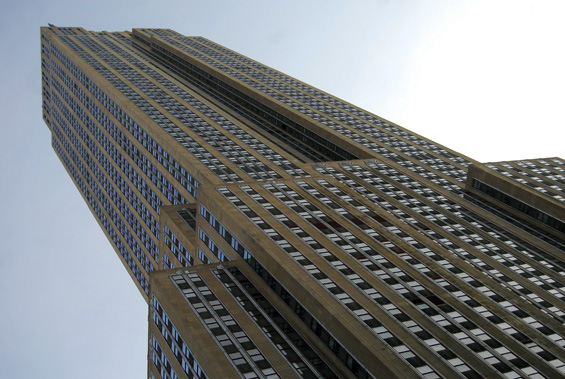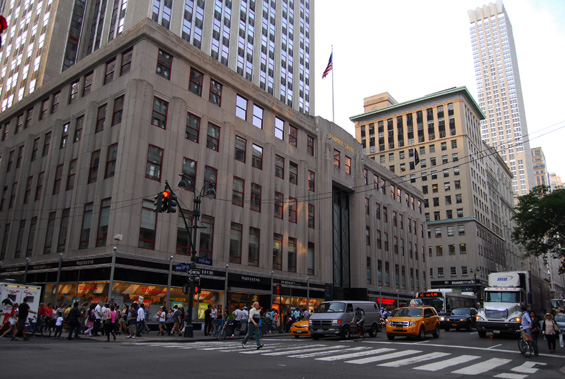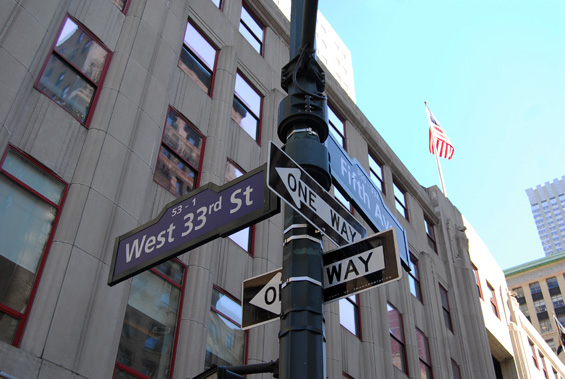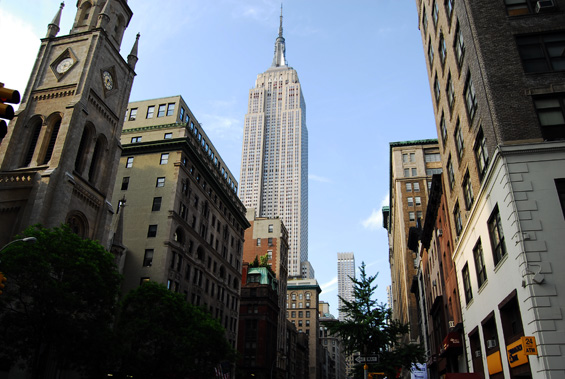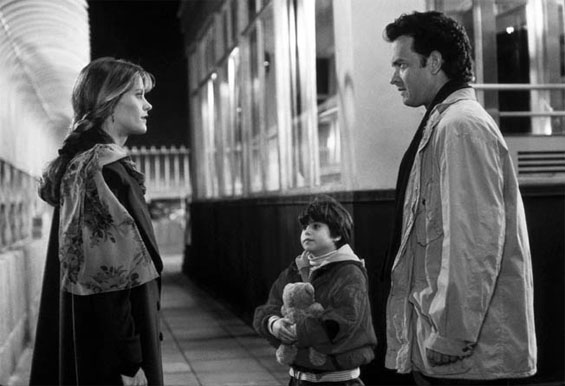Most Popular Film Locations: Empire State Building
The Empire State Building is a 103-story skyscraper located in Midtown Manhattan, New York City, at the intersection of Fifth Avenue and West 34th Street. It has a roof height of 1,250 feet (381 meters), and with its antenna spire included, it stands a total of 1,454 ft (443.2 m) high. Its name is derived from the nickname for New York, the Empire State. It stood as the world's tallest building for nearly 40 years, from its completion in early 1931.
The site of the Empire State Building was first developed as the John Thompson Farm in the late 18th century.] At the time, a stream ran across the site, emptying into Sunfish Pond, located a block away. Beginning in the late 19th century, the block was occupied by the Waldorf-Astoria Hotel, frequented by The Four Hundred, the social elite of New York. The limestone for the Empire State Building came from the Empire Mill in Sanders, Indiana which is an unincorporated town adjacent to Bloomington, Indiana. The Empire Mill Land office is near State Road 37 and Old State Road 37 just south of Bloomington. Bloomington, Bedford and Oolitic area are known as the limestone capital of the world. It is a point of local pride that the stone for the Empire State building came from there.
The Empire State Building was designed by William F. Lamb from the architectural firm Shreve, Lamb and Harmon, which produced the building drawings in just two weeks, using its earlier designs for the Reynolds Building in Winston-Salem, North Carolina, and the Carew Tower in Cincinnati, Ohio (designed by the architectural firm W. W. Ahlschlager & Associates) as a basis. Every year the staff of the Empire State Building sends a Father's Day card to the staff at the Reynolds Building in Winston-Salem to pay homage to its role as predecessor to the Empire State Building. The building was designed from the top down. The general contractors were The Starrett Brothers and Eken, and the project was financed primarily by John J. Raskob and Pierre S. du Pont. The construction company was chaired by Alfred E. Smith, a former Governor of New York and James Farley's General Builders Supply Corporation supplied the building materials. John W. Bowser was project construction superintendent. Excavation of the site began on January 22, 1930, and construction on the building itself started symbolically on March 17—St. Patrick's Day—per Al Smith's influence as Empire State, Inc. president. This was about the time that the Great Depression started. The project involved 3,400 workers, mostly immigrants from Europe, along with hundreds of Mohawk iron workers, many from the Kahnawake reserve near Montreal. According to official accounts, five workers died during the construction. Governor Smith's grandchildren cut the ribbon on May 1, 1931. Lewis Wickes Hine's photography of the construction provides not only invaluable documentation of the construction, but also a glimpse into common day life of workers in that era.
The construction was part of an intense competition in New York for the title of "world's tallest building". Two other projects fighting for the title, 40 Wall Street and the Chrysler Building, were still under construction when work began on the Empire State Building. Each held the title for less than a year, as the Empire State Building surpassed them upon its completion, just 410 days after construction commenced. Instead of taking 18 months as anticipated, the construction took just under fifteen. The building was officially opened on May 1, 1931 in dramatic fashion, when United States President Herbert Hoover turned on the building's lights with the push of a button from Washington, D.C. Coincidentally, the first use of tower lights atop the Empire State Building, the following year, was for the purpose of signalling the victory of Franklin D. Roosevelt over Hoover in the presidential election of November 1932.
The building's opening coincided with the Great Depression in the United States, and as a result much of its office space was initially unrented. The building's vacancy was exacerbated by its poor location on 34th Street, which placed it relatively far from public transportation, as Grand Central Terminal and Penn Station were (and are) several blocks away, as is the more-recently built Port Authority Bus Terminal. Other more successful skyscrapers, such as the Chrysler Building, did not have this problem. In its first year of operation, the observation deck took in approximately 2 million dollars, as much money as its owners made in rent that year. The lack of renters led New Yorkers to deride the building as the "Empty State Building". The building would not become profitable until 1950. The famous 1951 sale of the Empire State Building to Roger L. Stevens and his business partners was brokered by the prominent upper Manhattan real-estate firm Charles F. Noyes & Company for a record $51 million. At the time, that was the highest price paid for a single structure in real-estate history. Most Iconic Film Moment: Sleepless in Seattle
Other films that feature the Empire State Building include: |
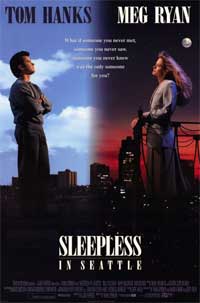 |
 |
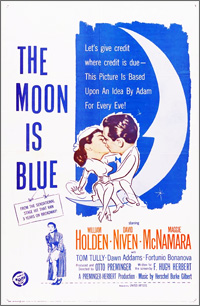 |
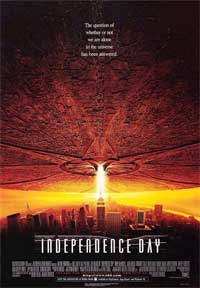 |
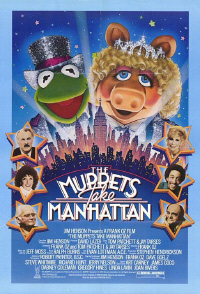 |
 |
 |
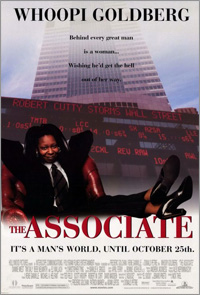 |
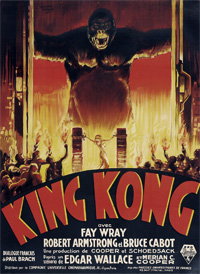 |
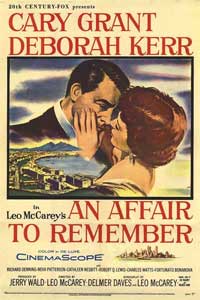 |
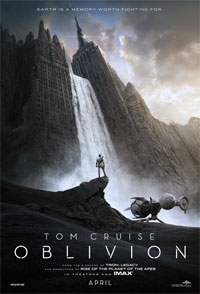 |
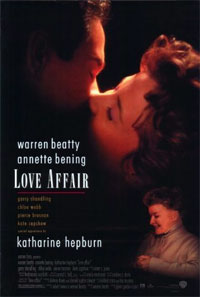 |
 |
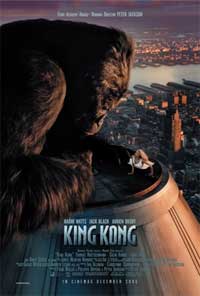 |
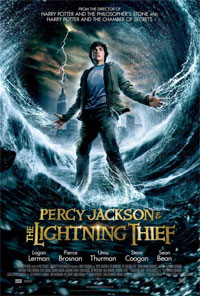 |
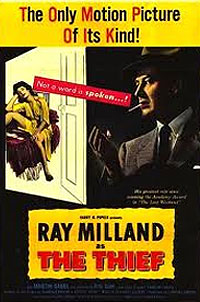 |
 |
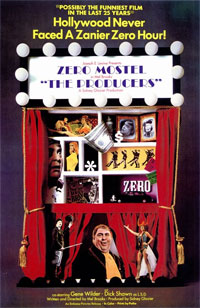 |
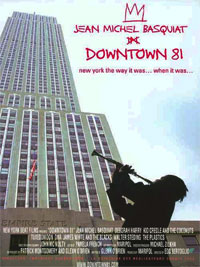 |
 |
Link: Most Popular Film Locations
Quick Links
Chart Listings
Disclaimer
All images that appear on the site are copyrighted to their respective owners and otsoNY.com claims no credit for them unless otherwise noted. If you own the rights to any of the images and do not wish them to appear on the site please contact us, and they will be promptly removed.
|
2009-2025 onthesetofnewyork.com | Film Locations | Picture Gallery | Privacy Policy | Disclaimer | Contact |
Donations for hosting |
|







